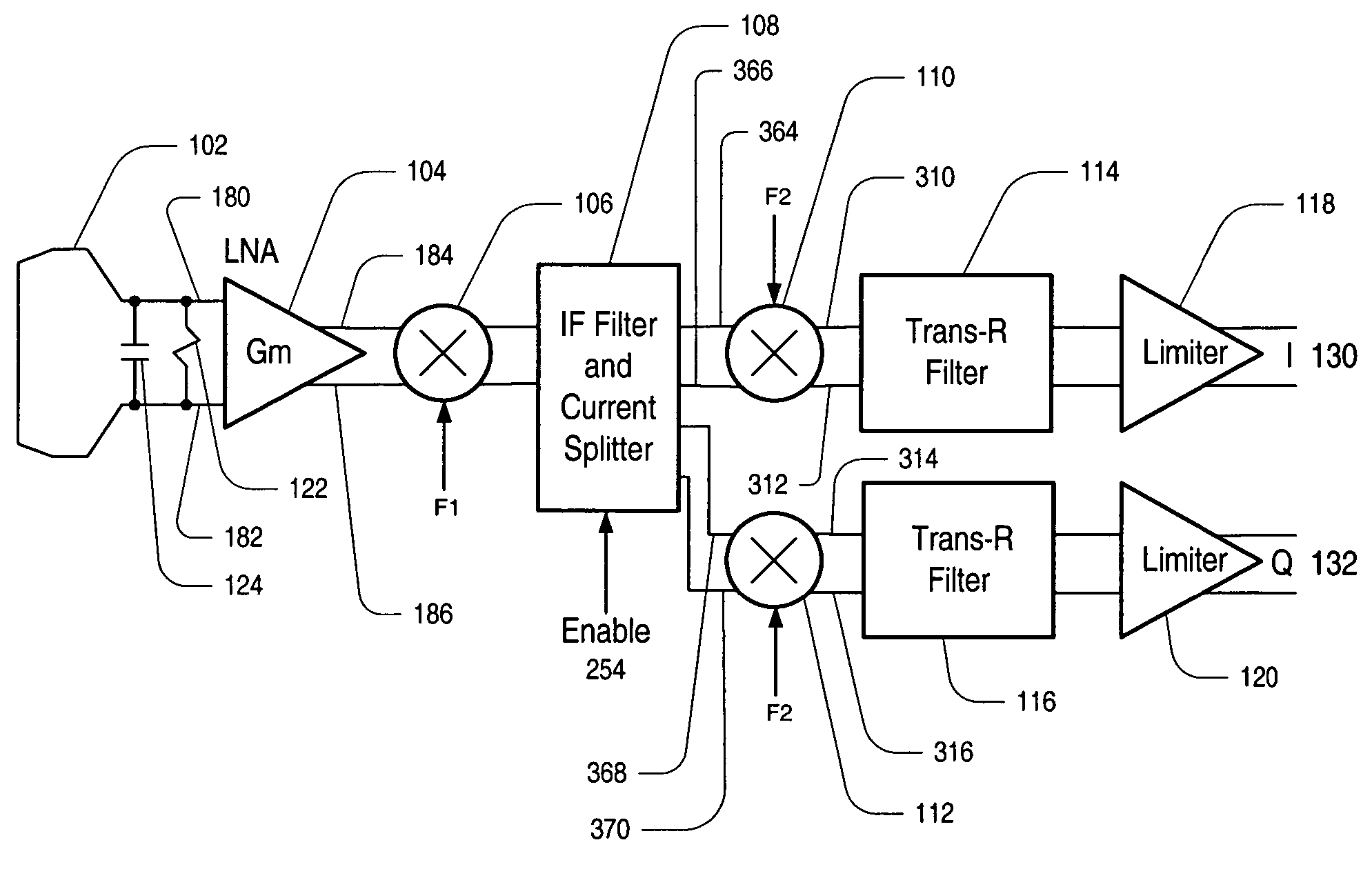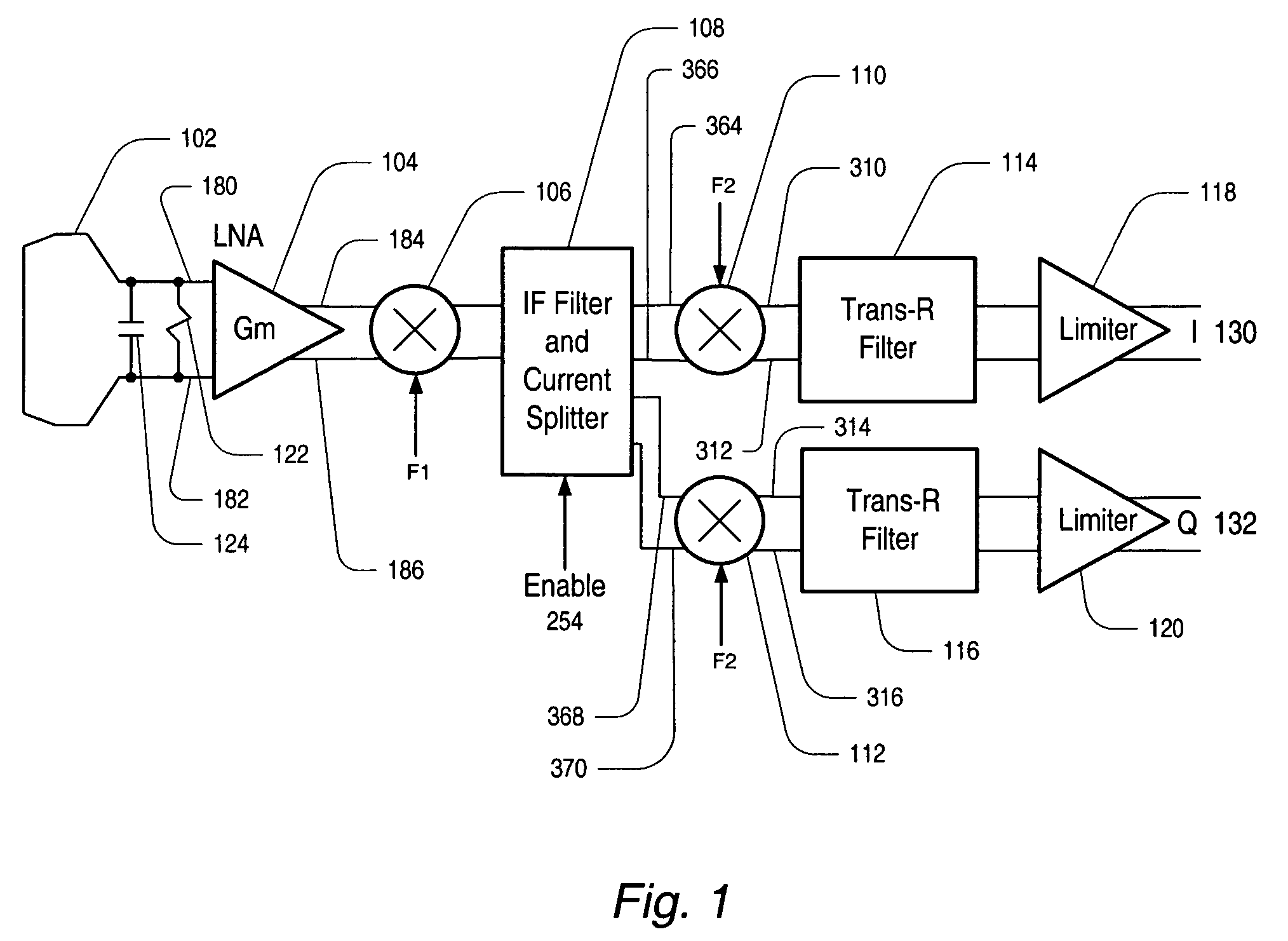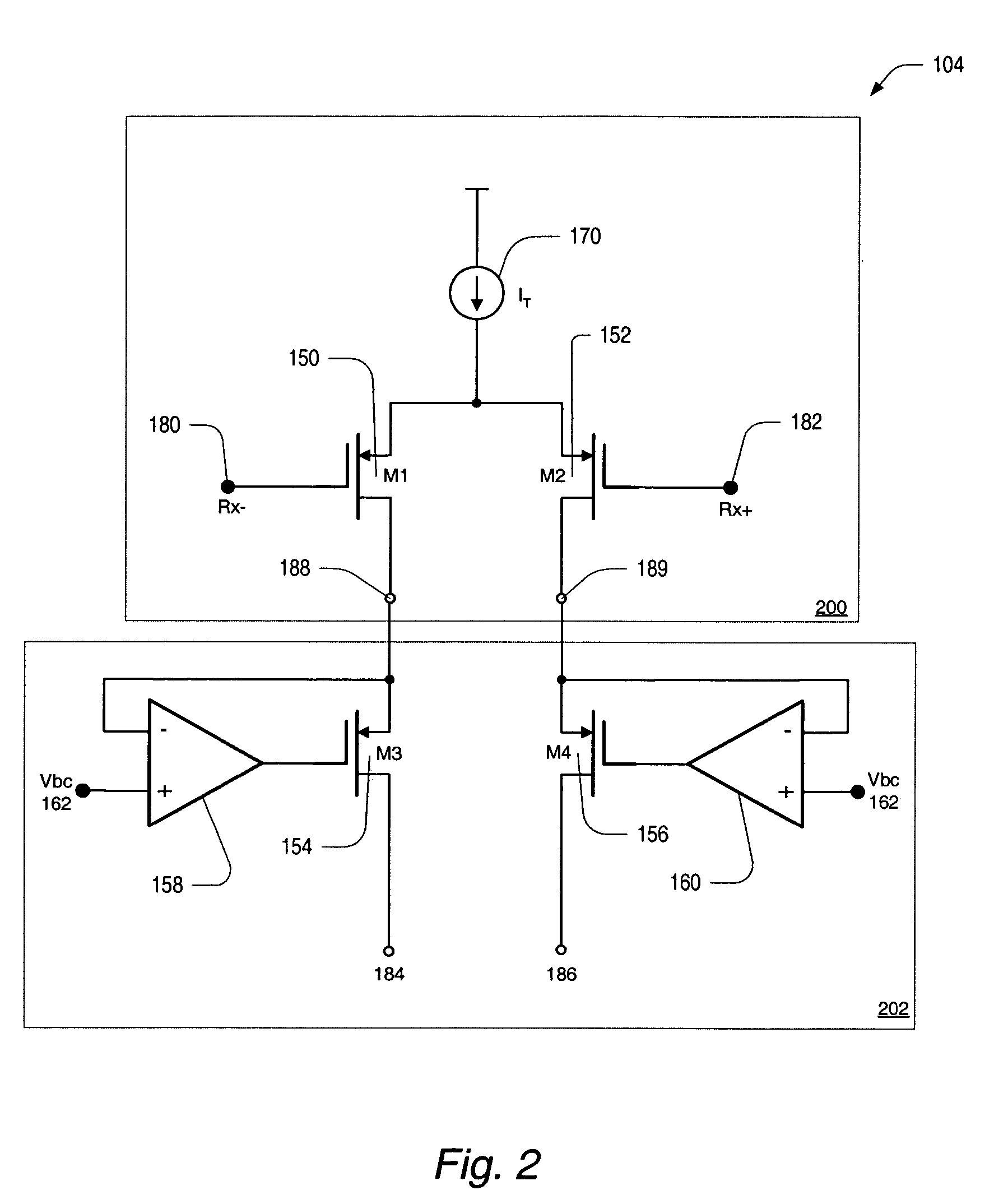Current-mode direct conversion receiver
a current-mode direct conversion and receiver technology, applied in the direction of transmission noise suppression, transmission, electric equipment, etc., can solve the problems of limiting the ease of use of rf receivers, non-ideal effects, and inability to operate, so as to minimize the input impedance (and voltage perturbations), minimize the input signal self-mixing, and minimize noise
- Summary
- Abstract
- Description
- Claims
- Application Information
AI Technical Summary
Benefits of technology
Problems solved by technology
Method used
Image
Examples
Embodiment Construction
[0018]As used herein, when referencing a pulse of a signal, a “leading edge” of the pulse is a first edge of the pulse, resulting from the value of the signal changing from a default value, and a “trailing edge” is a second edge of the pulse, resulting from the value of the signal returning to the default value. A “data-valid window” for a signal represents a time period during which the signal may be considered a valid digital signal. A first signal is said to be “corresponding” to a second signal if the first signal was generated in response to the second signal. A first signal is said to “propagated based on” a second signal, when the second signal controls the propagation of the first signal. Similarly, a first module is said to “use” a clock signal to transfer data to a second module, when propagation of the data from the first module to the second module is controlled and / or triggered by the clock signal.
[0019]FIG. 1 illustrates a receiver architecture implemented in accordanc...
PUM
 Login to View More
Login to View More Abstract
Description
Claims
Application Information
 Login to View More
Login to View More - R&D
- Intellectual Property
- Life Sciences
- Materials
- Tech Scout
- Unparalleled Data Quality
- Higher Quality Content
- 60% Fewer Hallucinations
Browse by: Latest US Patents, China's latest patents, Technical Efficacy Thesaurus, Application Domain, Technology Topic, Popular Technical Reports.
© 2025 PatSnap. All rights reserved.Legal|Privacy policy|Modern Slavery Act Transparency Statement|Sitemap|About US| Contact US: help@patsnap.com



